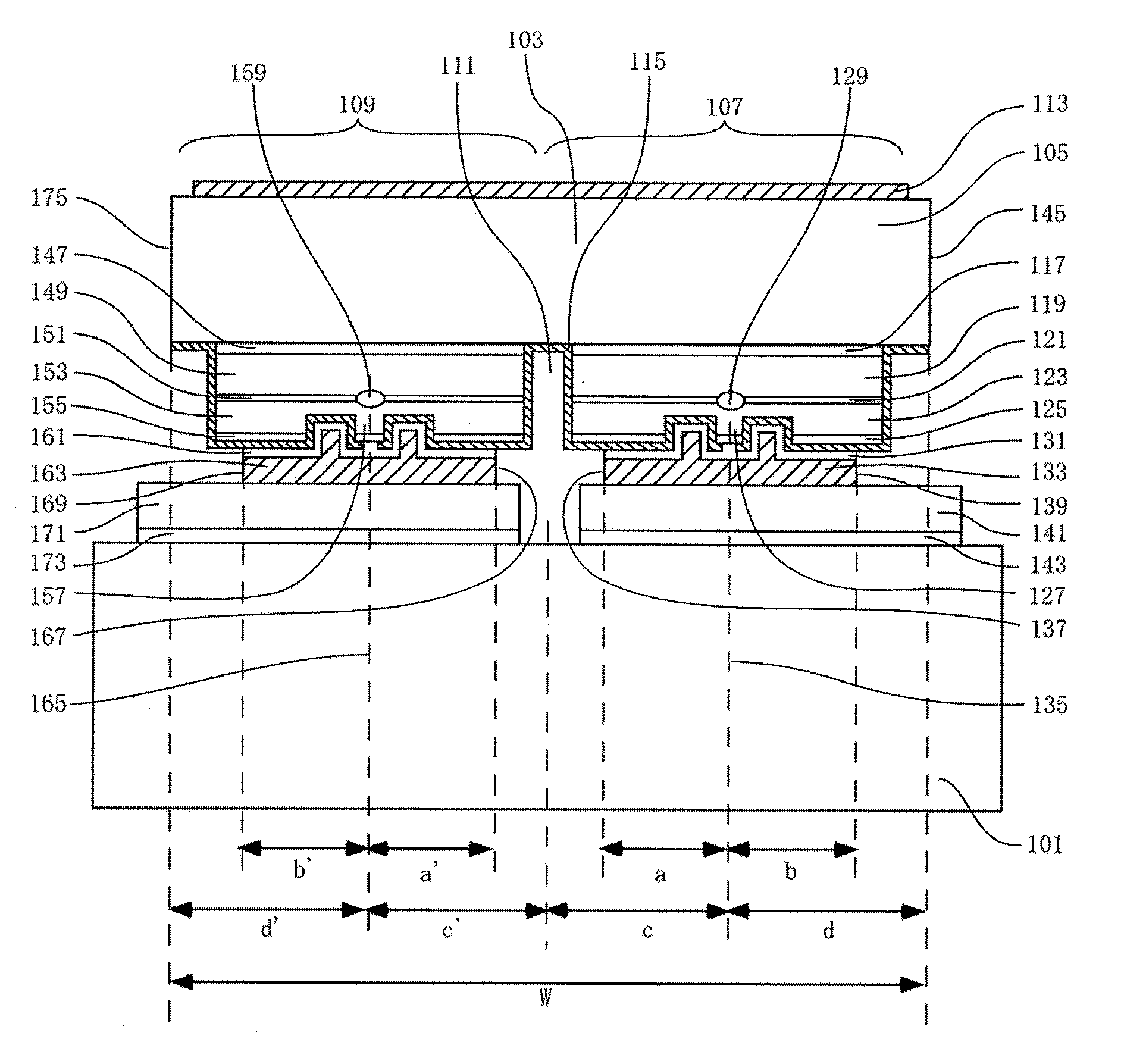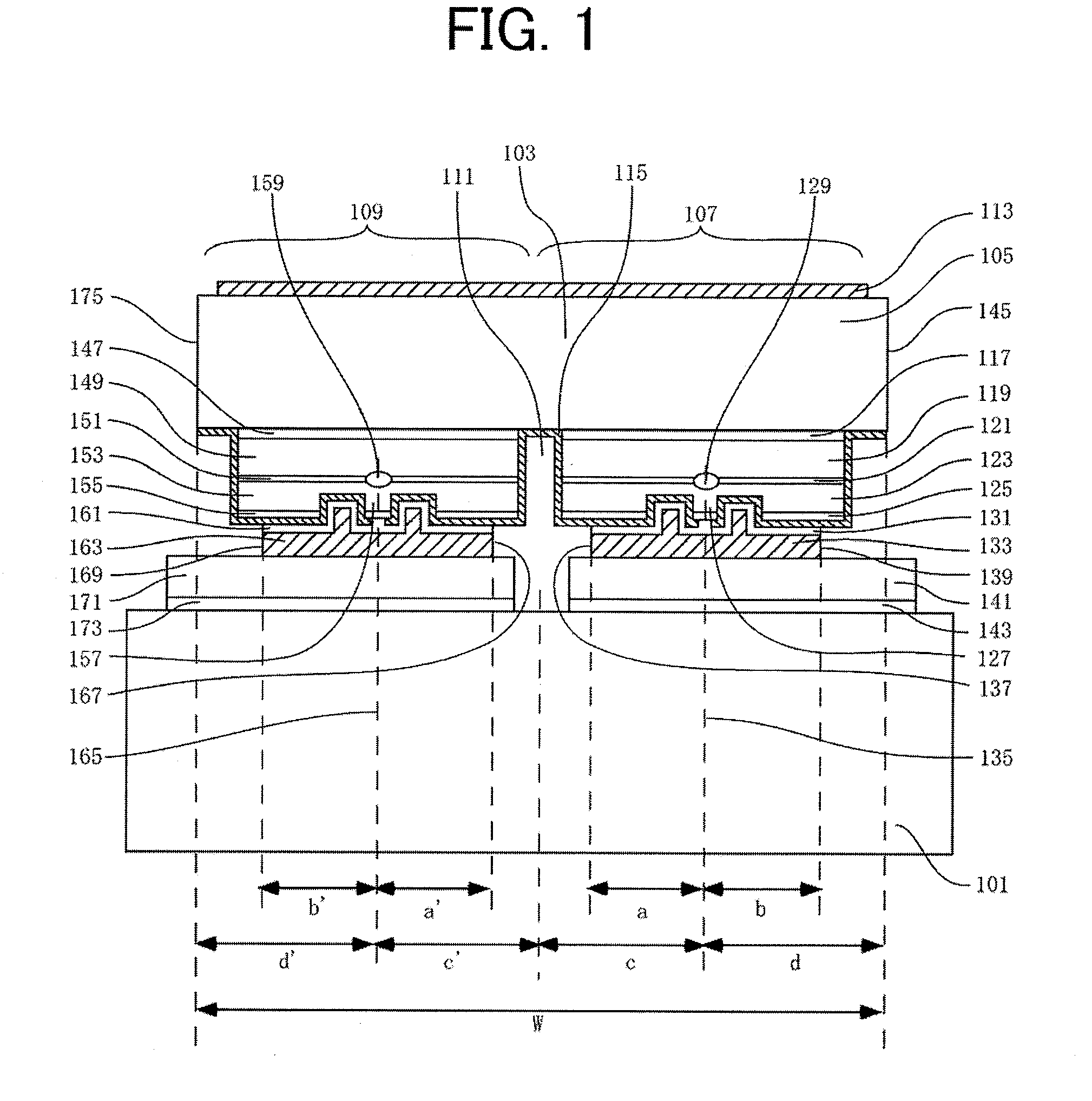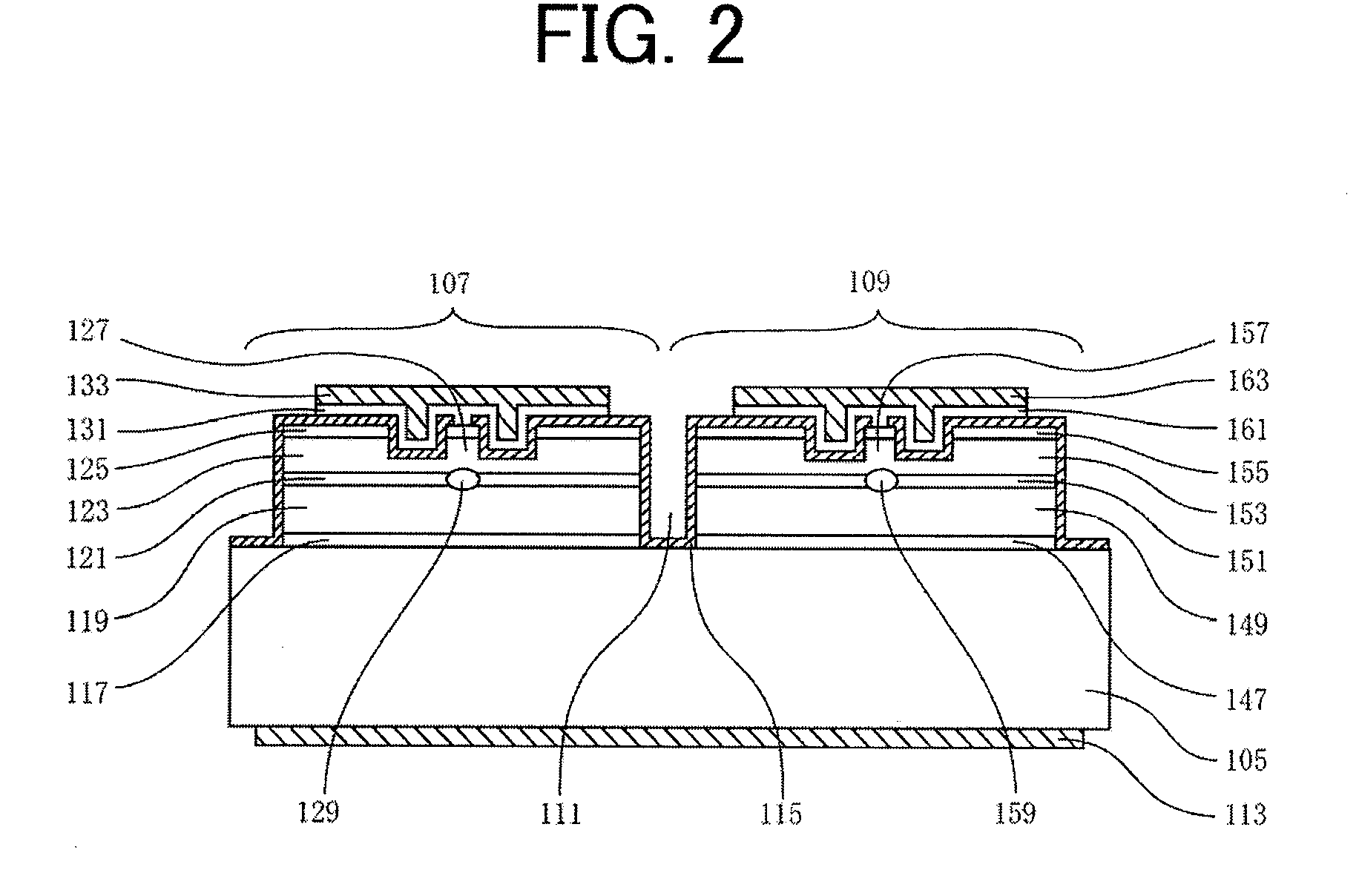Semiconductor laser device
a laser device and semiconductor technology, applied in semiconductor lasers, instruments, record information storage, etc., can solve the problems of reducing the built-in stress, reducing the manufacturing efficiency, and increasing the cost of the devi
- Summary
- Abstract
- Description
- Claims
- Application Information
AI Technical Summary
Benefits of technology
Problems solved by technology
Method used
Image
Examples
embodiment 1
FIG. 1 is a cross-sectional view that illustrates the structure of a semiconductor laser device according to Embodiment 1. FIG. 2 is a cross-sectional view that illustrates the structure of a dual wavelength semiconductor laser chip used in the semiconductor laser device according to Embodiment 1. The semiconductor laser chip 103 is connected onto a submount 101 by junction down. The semiconductor laser chip 103 is a dual wavelength semiconductor laser chip (referred to as a laser chip, below), in which a first semiconductor laser region 107 having a ridge-waveguide for oscillating a 780 nm-wavelength-band laser beam and a second semiconductor laser region 109 having a ridge-waveguide for oscillating a 650 nm-wavelength-band laser beam are monolithically formed on a single n-GaAs substrate 105. In a laser chip 103, in order to electrically insulate the first semiconductor laser region 107 and the second semiconductor laser region 109 from each other, an insulation trench 111 is form...
embodiment 2
FIG. 8 is a cross-sectional view of a dual wavelength semiconductor laser chip used in a semiconductor laser device according to Embodiment 2. The dual wavelength semiconductor laser chip of the semiconductor laser device according to Embodiment 2 includes, on the p-side-electrode platings to be joined to a submount 101, barrier metal layers 801 and 803 made of Ni, Ta, Ti, Pt, Cr, or the like, and Au thin film layers 805 and 807 formed on the barrier metal layers with their thickness of 10 nm to 60 nm to prevent the barrier metals from getting oxidized. The Au thin film layers 805 and 807 may not be formed, if the barrier metal layers 801 and 803 can be prevented from getting oxidized by other methods. By forming the barrier metal layers on the dual wavelength semiconductor laser chip in a manner described above, it is possible to prevent development of depletions (voids) in the vicinity joining surfaces, which would otherwise be produced by mutual diffusion between the electrode ma...
PUM
 Login to View More
Login to View More Abstract
Description
Claims
Application Information
 Login to View More
Login to View More - R&D
- Intellectual Property
- Life Sciences
- Materials
- Tech Scout
- Unparalleled Data Quality
- Higher Quality Content
- 60% Fewer Hallucinations
Browse by: Latest US Patents, China's latest patents, Technical Efficacy Thesaurus, Application Domain, Technology Topic, Popular Technical Reports.
© 2025 PatSnap. All rights reserved.Legal|Privacy policy|Modern Slavery Act Transparency Statement|Sitemap|About US| Contact US: help@patsnap.com



